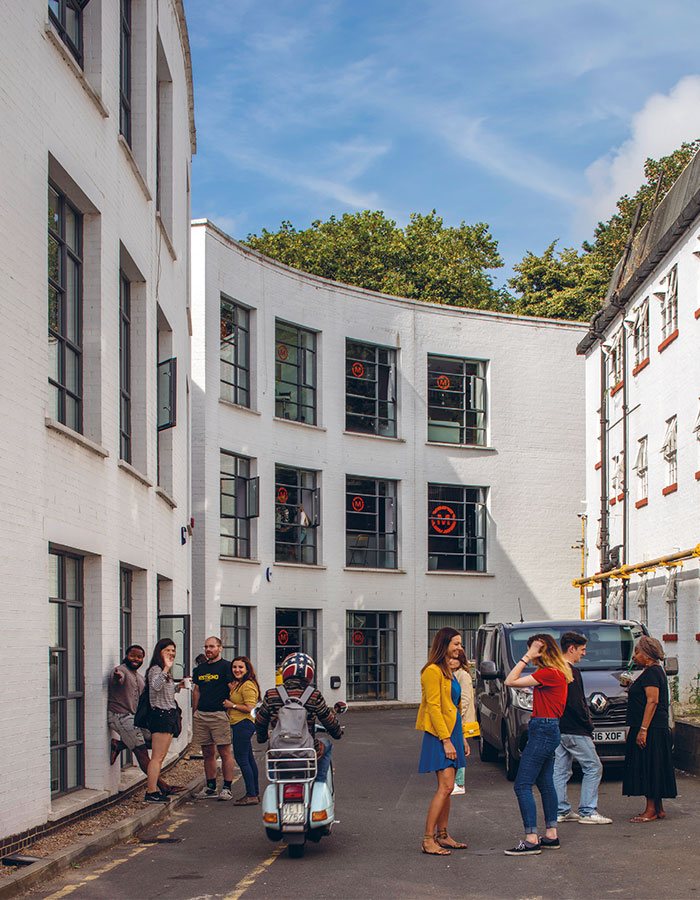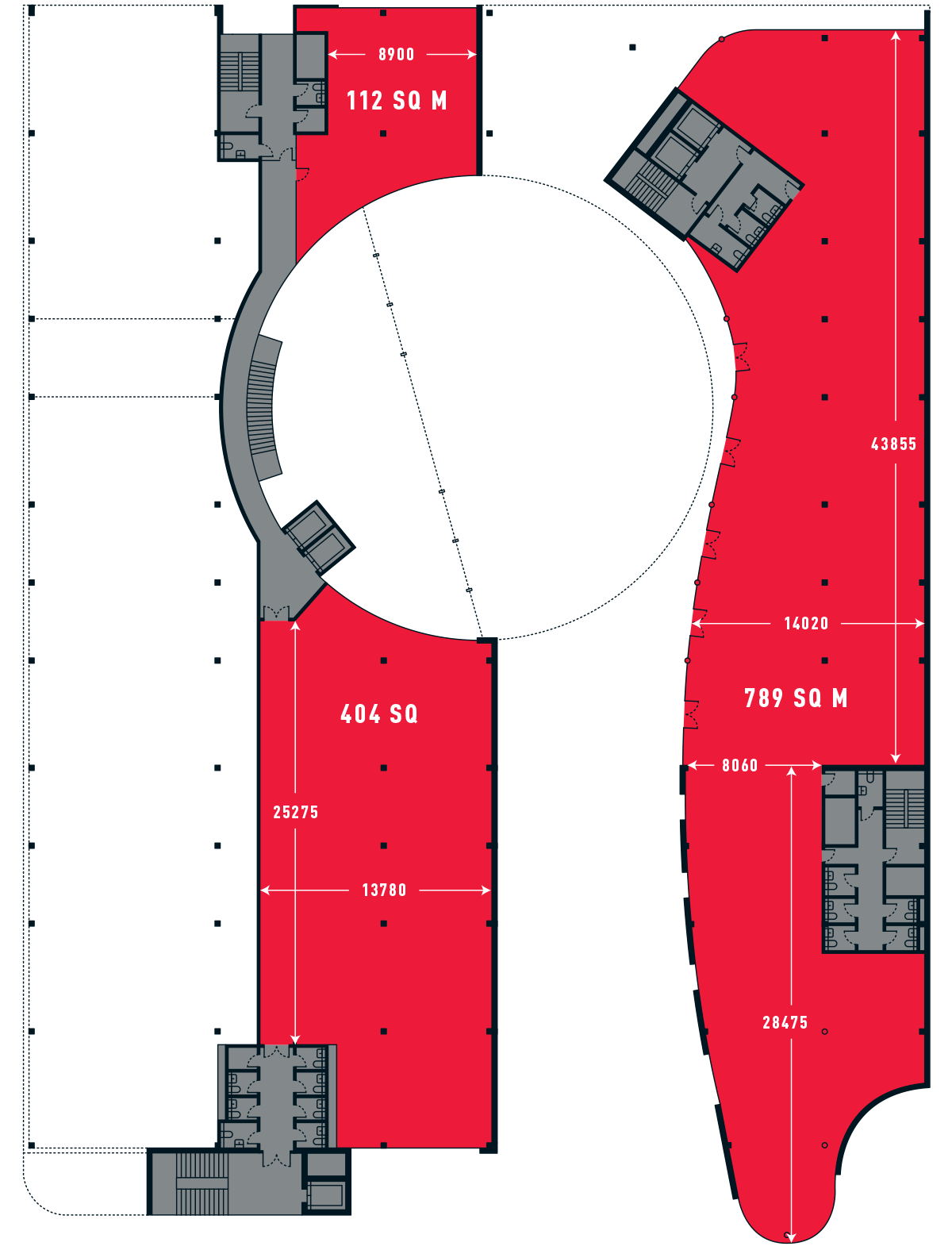Fiddlers Three is a 1944 British black-and-white comedy with music. The film was produced by Michael Balcon and directed by Harry Watt. The cast included Tommy Trinder, Sonnie Hale, Frances Day, Francis L. Sullivan, Diana Decker and Elisabeth Welch. Making their film debuts were James Robertson Justice, and Kay Kendall near the bottom of the cast list, as the “Girl Who Asks About Her Future At Orgy”. The film follows the adventures of two sailors and a Wren who are struck by lightning and transported back to Ancient Rome, where they are accepted as seers. The film was called While Nero Fiddled on its USA release. It is a loose sequel to the 1940 film Sailors Three which had also starred Trinder. The film was only moderately successful at the British Box Office but proved to be a major hit in Australia.
Production Tag: 40
CHAMPAGNE CHARLIE (1944)
Champagne Charlie is a 1944 British musical film directed by Alberto Cavalcanti and loosely based on the rivalry between the popular music hall performers George Leybourne (born Joe Saunders), who was called “Champagne Charlie” because he was the first artist to perform the song of that title, and Alfred Vance, who was known as “The Great Vance”. Leybourne and Vance, portrayed by Tommy Trinder and Stanley Holloway, were London’s big music hall stars of the 1860s and 70s, of the kind called lions comiques. In the film, they are “top of the bill” at their respective music halls. The film’s female leads are a music hall owner and her daughter, portrayed by Betty Warren and Jean Kent. Champagne Charlie opens with a sing-along in a pub, and follows the rise of Leybourne as a music hall singer. The highlight of the film is a singing competition between the two protagonists. Leybourne sings “Ale Old Ale” and Vance replies with “Gin, Gin, Gin”; the competition continues, with the scene finally ending with the song of the title. The film is notable for its realistic approach to showing details of the audiences, venues and staff, with copious quantities of food and drink providing a vicarious delight for wartime audiences. In 1944, Champagne Charlie was typical of feature films designed to raise morale and generate goodwill.
THEY CAME TO A CITY (1944)
They Came to a City is a 1945 British film directed by Basil Dearden adapted from a J. B. Priestley play. It stars John Clements, Googie Withers, Raymond Huntley, Renee Gadd, A. E. Matthews and others, and is notable for including a cameo guest appearance by Priestley as himself. The plot concerns the experiences of various people who have come to live in their “ideal” city, and explores their hopes and reasons for doing so. Many of the cast had also performed their roles in the original stage play. The film’s art direction was by Michael Relph.
FOR THOSE IN PERIL (1944)
For Those in Peril is a 1944 British war film produced by Ealing Studios that marked the directorial debut of Charles Crichton. The film was developed from a short story by Richard Hillary, an RAF pilot killed in action in January 1943. The basic and relatively slight storyline of For Those in Peril was an end to produce a film with a documentary feel and an element of wartime propaganda. The film stars Ralph Michael and David Farrar.
THE HALFWAY HOUSE (1944)
The Halfway House is a 1944 British drama film directed by Basil Dearden and starring Mervyn Johns, his daughter Glynis Johns, Tom Walls and Françoise Rosay. The film tells the story of ten people who are drawn to stay in an old inn near the Welsh countryside. The film was shot at Barlynch Abbey on the Devon/Somerset border. BFI Screenonline writes, “The high quality personnel involved and the tight, professional scripting mark the film out as one of the earliest templates of what would become the traditional Ealing style.”
SAN DEMETRIO LONDON (1943)
San Demetrio London is a 1943 British World War II docudrama based on the true story of the 1940 salvage of the tanker MV San Demetrio by some of her own crew, who reboarded her after she had been set on fire by the German heavy cruiser Admiral Scheer and then abandoned, during the Battle of the Atlantic. The film was produced by Michael Balcon for Ealing Studios and directed by Charles Frend.
MY LEARNED FRIEND (1943)
My Learned Friend is a 1943 British, black-and-white, comedy, farce, directed by Basil Dearden with his regular collaborator, Will Hay, as the film’s star in the role of William Fitch. The principal supporting roles were taken by Claude Hulbert and Mervyn Johns . Character roles went to Laurence Hanray as Sir Norman, Charles Victor as “Safety” Wilson, Ernest Thesiger as Ferris and Ronald Shiner as the Man in Wilson’s café. It was produced by Michael Balcon, Robert Hamer and Ealing Studios. The film’s title refers to a tradition in British law: when addressing either the court or the judge, a barrister refers to the opposing counsel using the respectful term, “my learned friend”. It was the last film featuring Will Hay as he had an operation, however, it wasn’t the last role in his career as he would star as “Doctor Muffin” in The Will Hay Programme that aired on the radio, the radio show began in 1944. The humour of the film was different from the humour of Hay’s films he previously made with Moore Marriott and Graham Moffatt and the film had more of a dark humour than any of Hay’s other films. Hay had planned to make more films with Claude Hulbert that had a dark humour, but it was Hay’s last film due to illness.
UNDERCOVER (1943)
Undercover is a major 1943 war film produced by Ealing Studios in London, originally titled Chetnik. It was filmed in Wales and released on 27 July 1943. The subject was the Yugoslav guerrilla movement in German-occupied Yugoslavia loosely based on the Draza Mihailovich resistance movement. The movie was produced by Sir Michael Balcon and directed by Sergei Nolbandov. It starred John Clements as Milosh Petrovitch, Mary Morris as Anna Petrovitch, his wife, Stephen Murray as Stephan Petrovitch, his brother, Michael Wilding as Constantine, and Stanley Baker as Petar. The movie was re-released in the United States in 1944 by Columbia Pictures under the title Underground Guerrillas. The Ealing movie was similar to the 20th Century Fox wartime film Chetniks! The Fighting Guerrillas (1943) made in the U.S. The plot revolves around a resistance movement that emerges in Yugoslavia after the German invasion in 1941. The guerrillas are able to blow up trains, engage in sabotage, and to battle German troops. In the final scene, the guerrillas are shown going into the Serbian mountains to continue their resistance struggle until the German forces are driven out of the country. The movie was released on DVD on 25 January 2010 by Optimum Home Entertainment in the UK.
THE BELLS GO DOWN (1943)
The Bells Go Down is a 1943 black-and-white wartime film made by Ealing Studios. The reference in the title is to the alarm bells in the fire station that “go down” when a call to respond is made. The film is an ensemble piece that covers the period between 27 August 1939, and 9 September 1940, when World War II began and London was subjected to aerial bombing, and is a tribute to the solidarity of not just those engaged in service, but among the British people as a whole.
It was produced by Michael Balcon and directed by Basil Dearden and was intended to give praise to the British Auxiliary Fire Service (AFS). Although a plot employing fictitious landmarks and localities, many of the incidental shots were taken at actual fires caused by the air raids on London in the previous two years. A sub-plot depicted the rivalry between the part-time AFS and the full-time London Fire Brigade (the two brigades merged into the National Fire Service in 1941). The reasons for joining the service, the training and finally the work and tragedy during September 1940 Blitz on London were shown for several characters. The background narration was spoken by Leo Genn.
The film was released at nearly the same time as the similar Fires Were Started, a fictional “documentary” that used actual firemen instead of professional actors, and as a result was sometimes reviewed unfavorably by comparison.
The score was originally offered to William Walton, but for various reasons (possibly including that he had lost his own home in the Blitz) he offered it to his musical assistant Roy Douglas.
NINE MEN (1943)
The council of Nine Men was a citizens board and a form of representational democracy in New Netherland. It replaced the previous councils, the Twelve Men and the Eight Men. Members of the council were elected in 1647, 1649, 1650 and 1652. On July 26, 1649, eleven current and former members of the board signed the Petition of the Commonality of New Netherland, which requested that the States General take action to encourage economic freedom and force local government like that in the Netherlands, removing the colony from the control of the Dutch West India Company. It became the basis for the municipal government when the city of New Amsterdam received its charter in 1653.





